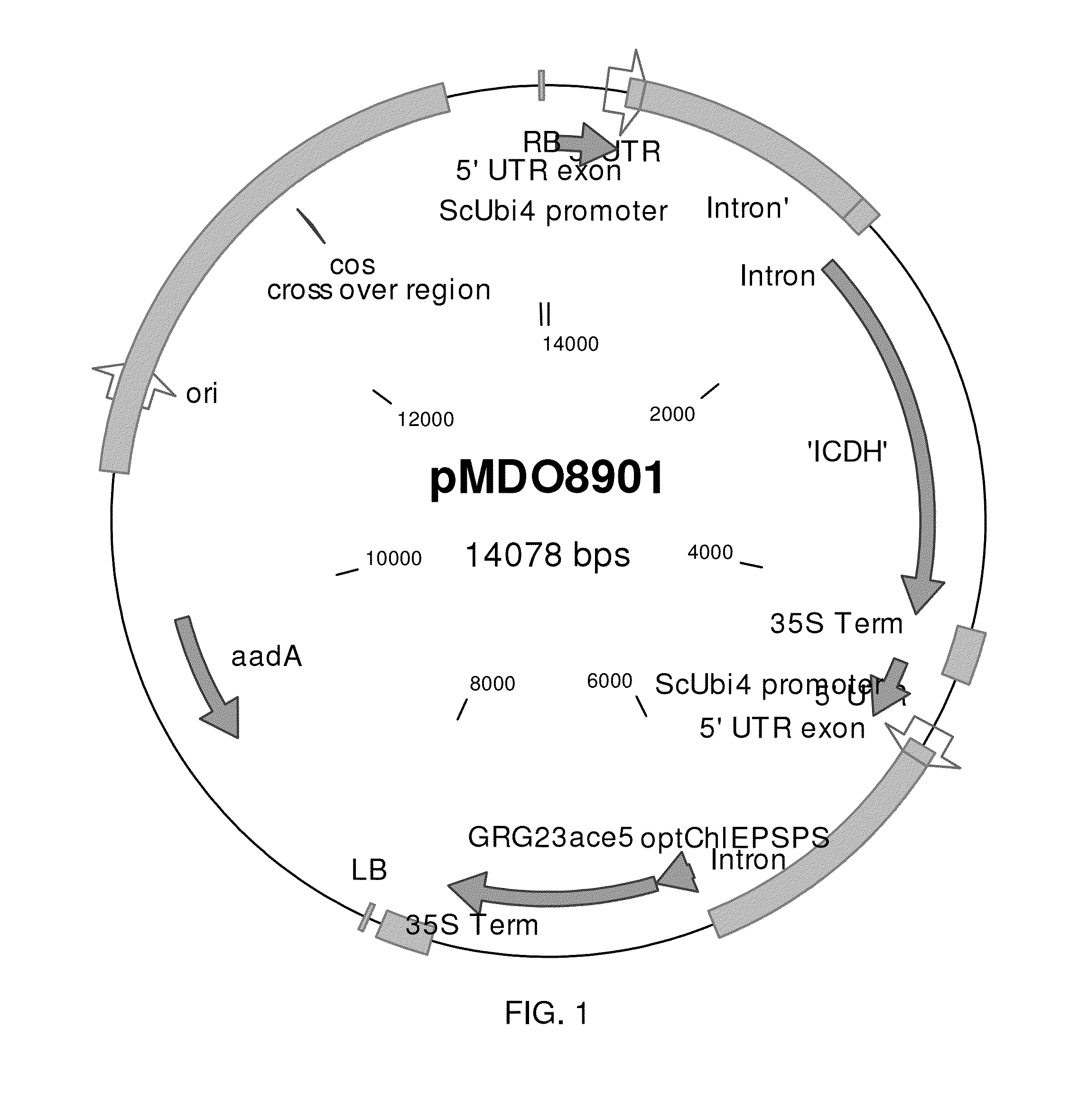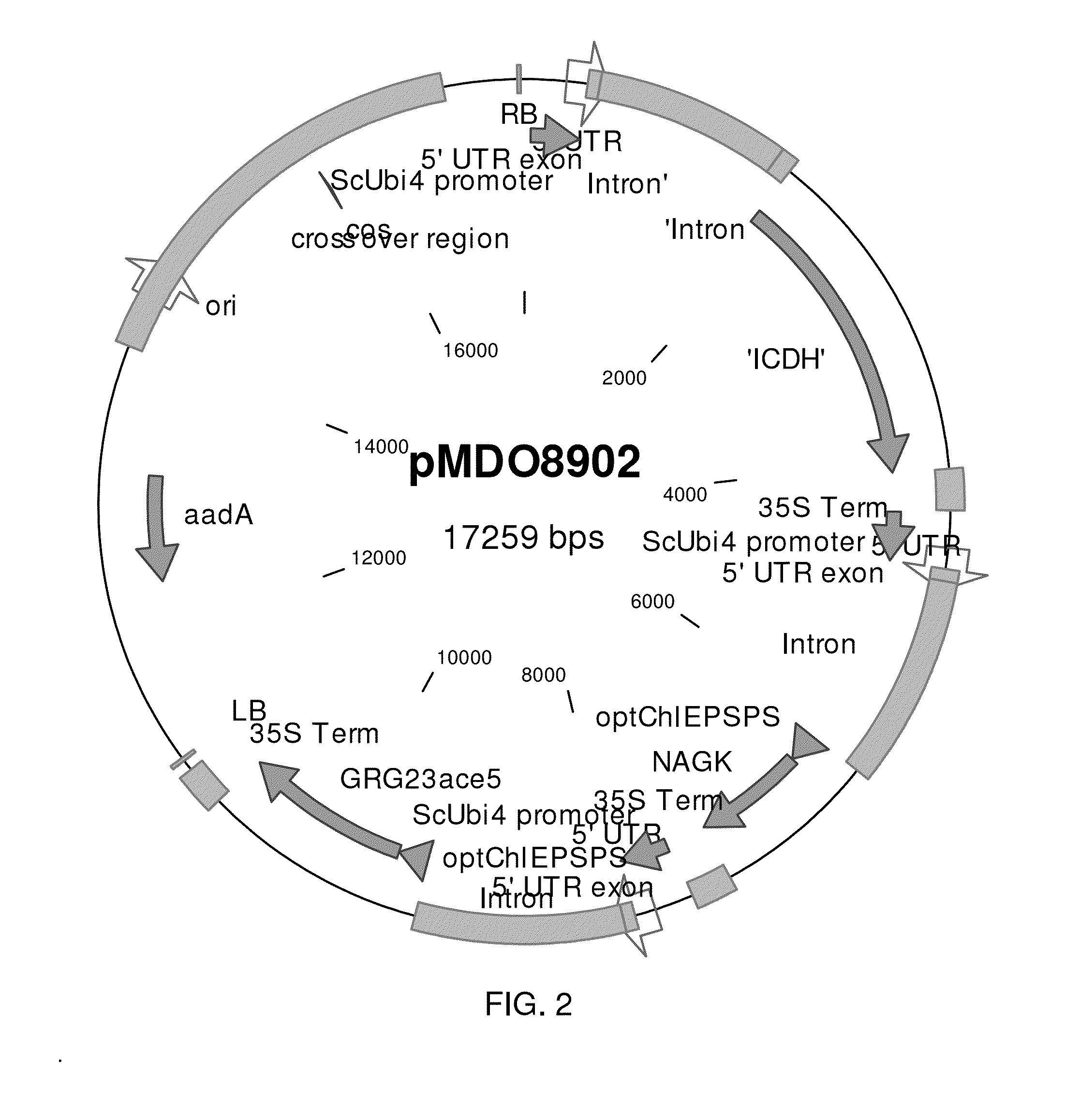Prokarytoic-Type Isocitrate Dehydrogenase and Its Application for Improving Nitrogen Utilization in Transgenic Plants
a technology of isocitrate dehydrogenase and transgenic plants, which is applied in the field of plants, can solve problems such as environmental challenges, and achieve the effects of increasing nitrogen uptake, increasing nitrogen utilization efficiency, and increasing yield
- Summary
- Abstract
- Description
- Claims
- Application Information
AI Technical Summary
Benefits of technology
Problems solved by technology
Method used
Image
Examples
Embodiment Construction
[0019]The development of plant varieties that use nitrogen more efficiently will reduce the need for excessive inputs of nitrogen, save production costs for farmers, benefit farmers in developing countries who do not have access to fertilizer inputs, and reduce environmental contamination associated with the application of excessive nitrogen fertilizers. One approach that has been used in the development of plant varieties with improved nitrogen utilization relies on conventional plant breeding techniques. However, such approaches have had variable success due to lack of specification in the genetic recombination.
[0020]There is a need to develop plant cultivars that absorb and use nitrogen more efficiently. Plant scientists have adopted the shorthand term nitrogen use efficiency (NUE), and a variety of methods of measuring and evaluating NUE have been developed [Craswell, E. T. and Godwin, D. C. (1984) The efficiency of nitrogen fertilizers applied to cereals grown in different clim...
PUM
| Property | Measurement | Unit |
|---|---|---|
| stress tolerance | aaaaa | aaaaa |
| morphology | aaaaa | aaaaa |
| weight | aaaaa | aaaaa |
Abstract
Description
Claims
Application Information
 Login to View More
Login to View More - R&D
- Intellectual Property
- Life Sciences
- Materials
- Tech Scout
- Unparalleled Data Quality
- Higher Quality Content
- 60% Fewer Hallucinations
Browse by: Latest US Patents, China's latest patents, Technical Efficacy Thesaurus, Application Domain, Technology Topic, Popular Technical Reports.
© 2025 PatSnap. All rights reserved.Legal|Privacy policy|Modern Slavery Act Transparency Statement|Sitemap|About US| Contact US: help@patsnap.com


